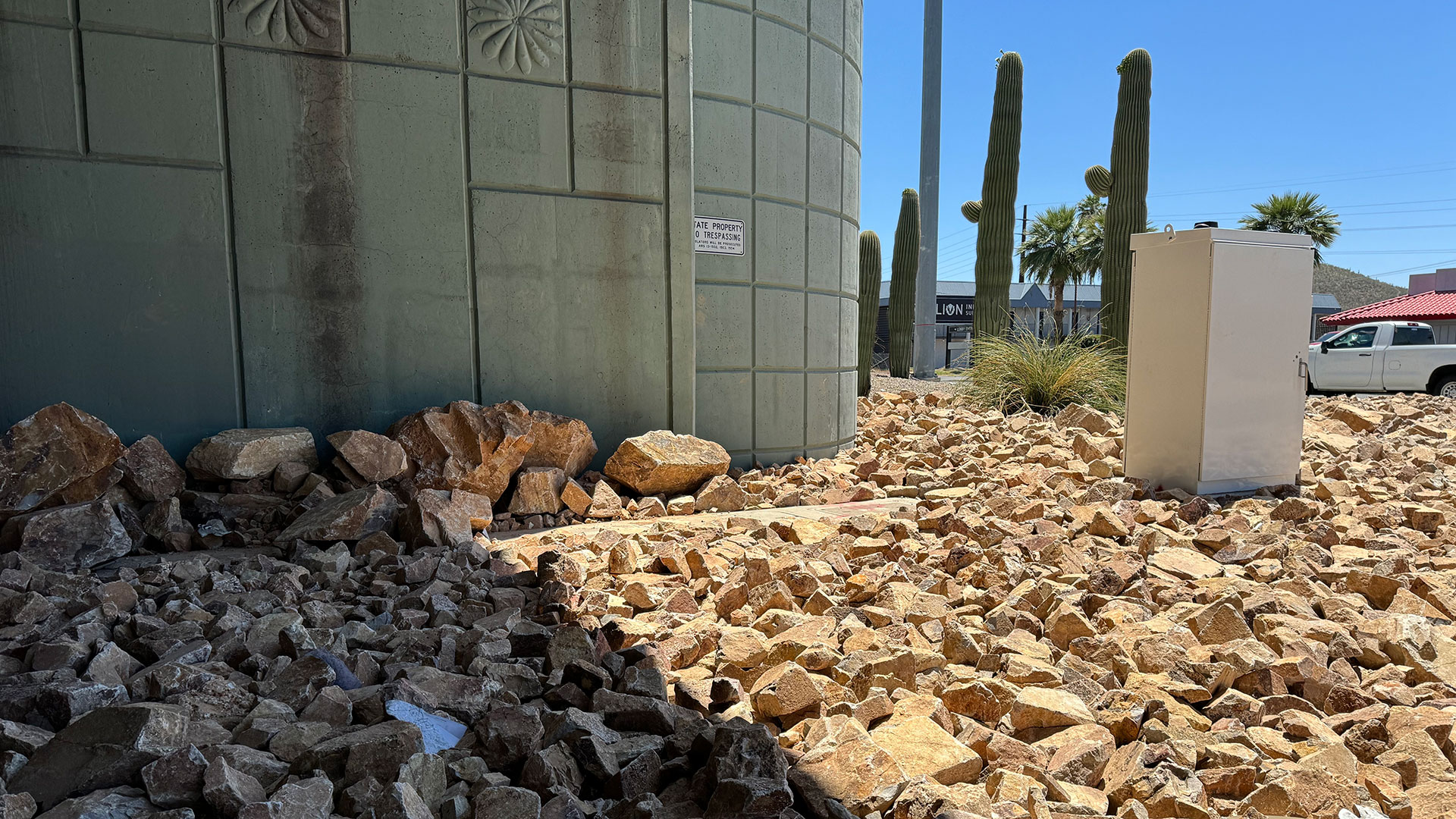 Rocks placed in the underpass on the intersection of Congress St. and I-10 in Tucson, Ariz., on Tuesday, May 7, 2024.
Rocks placed in the underpass on the intersection of Congress St. and I-10 in Tucson, Ariz., on Tuesday, May 7, 2024.
Over the last month, jagged rocks and boulders have replaced the gravel at two of Tucson’s high-traffic underpasses.
City officials say the move is an attempt to reduce pedestrian accidents, but community activist groups see the rocks as an example of anti-homeless architecture.
Rocks were placed at Speedway and I-10 last month, and similar rocks were placed at Congress and I-10 today.
According to city spokesman Andy Squire, the project is a pilot safety program between the city and the Arizona Department of Transportation to reduce pedestrian accidents.
“The work being done will include improved landscaping and lighting to encourage pedestrians to utilize the sidewalk areas to move through the underpasses and provide greater visibility for drivers, cyclists, and pedestrians moving along these arterials underneath the freeway,” he wrote in a statement.
He said individuals in underpasses and around intersections are a safety concern and there have been significant accidents both Congress and Speedway.
“This is intended to ensure that there is no activity occurring under those underpasses other than people moving through them. So that would be loitering, that would be soliciting, that would be camping. Any activity that is occurring in those underpass areas beyond moving through them, needs to be stopped,” he said.
Underpasses are designated no trespassing areas by the state, but community activists like Liz Casey said despite this, underpasses provide temporary respite from the heat.
"The main thing is shade. We’re really concerned about the summer months and the heat coming up,” she said. “It dehumanizes people, it shows them that the city does not see their safety and care as a priority.”
It’s unclear what metrics will determine a successful pilot program, but Squire said the strategy could expand to other Tucson intersections in the future.

By submitting your comments, you hereby give AZPM the right to post your comments and potentially use them in any other form of media operated by this institution.